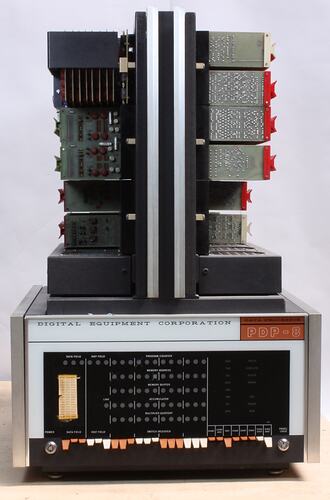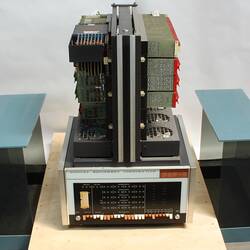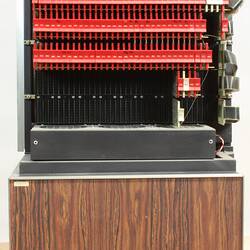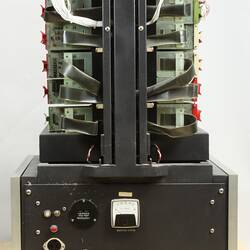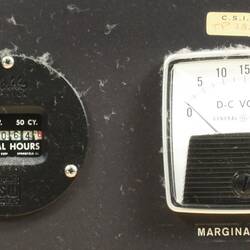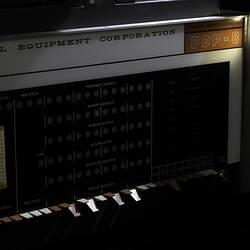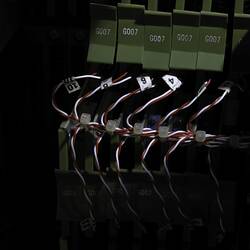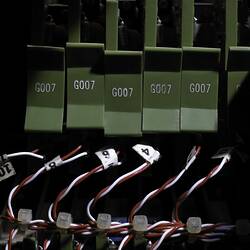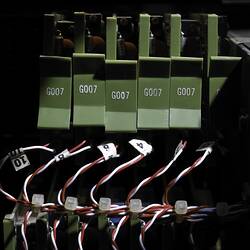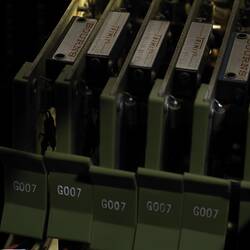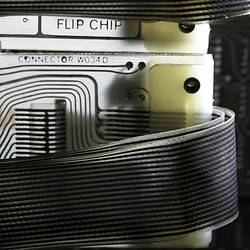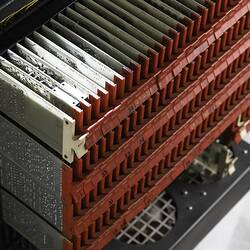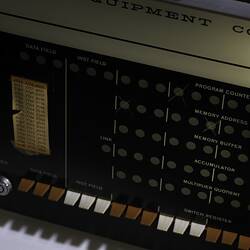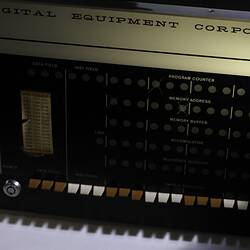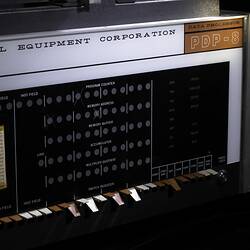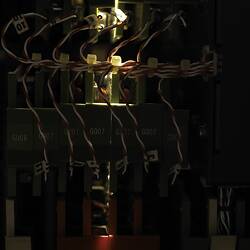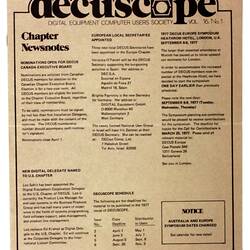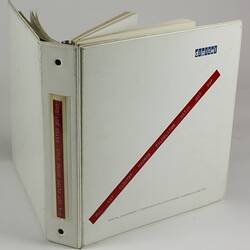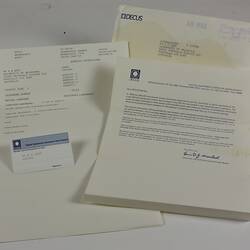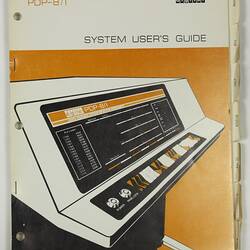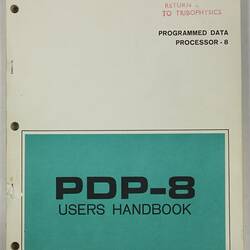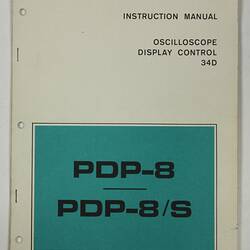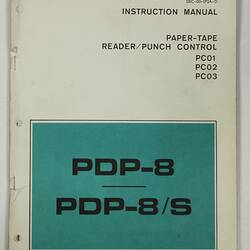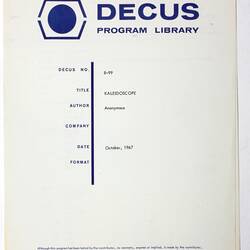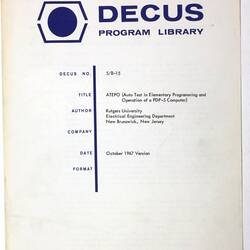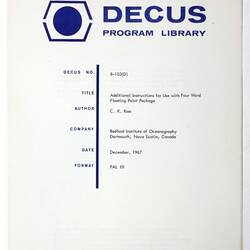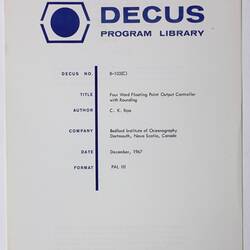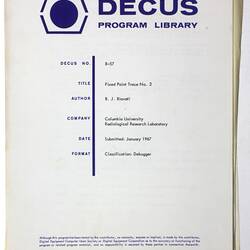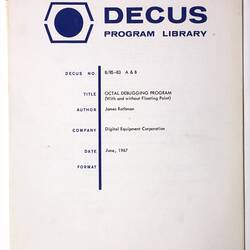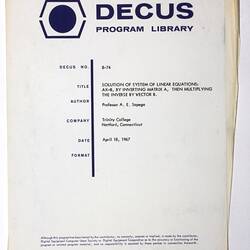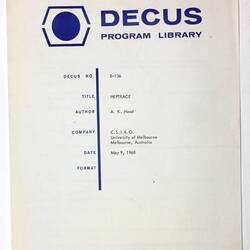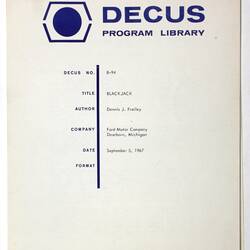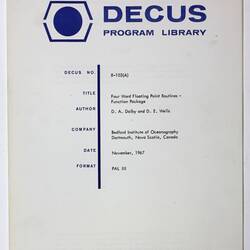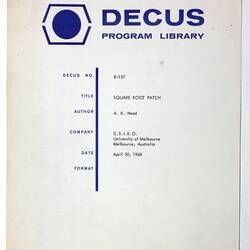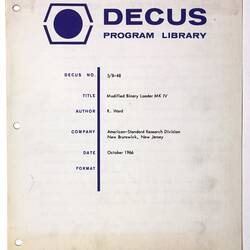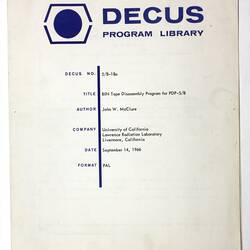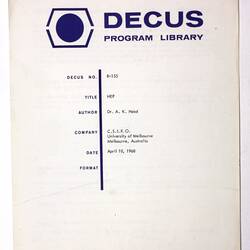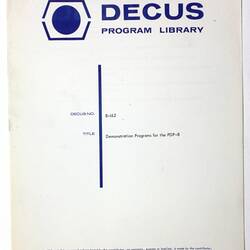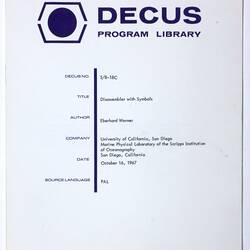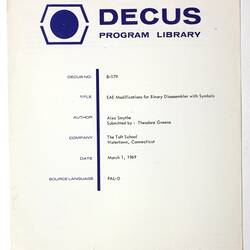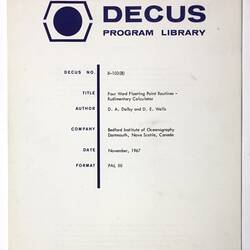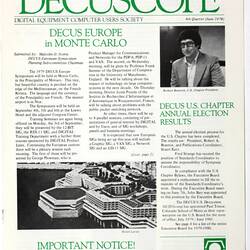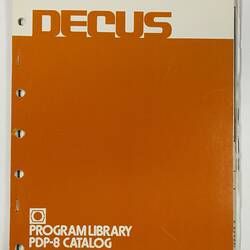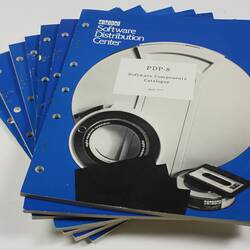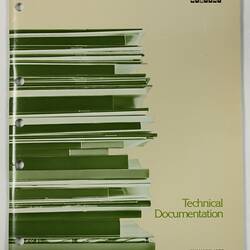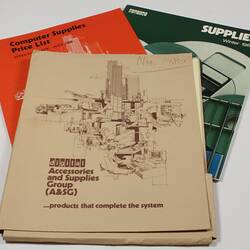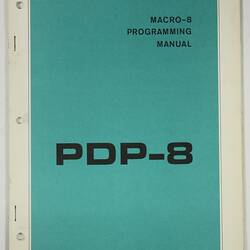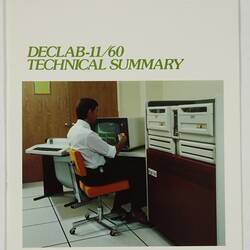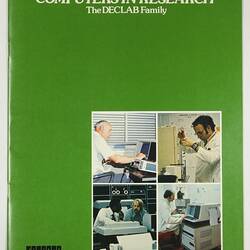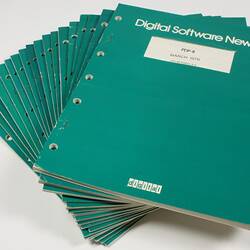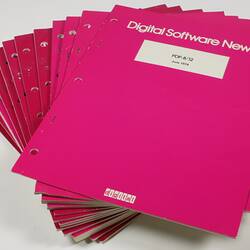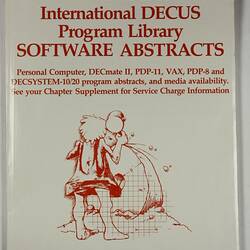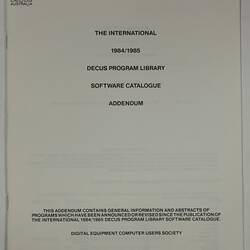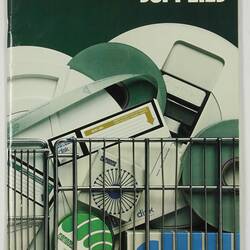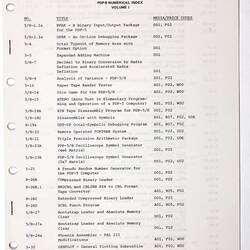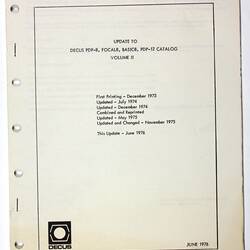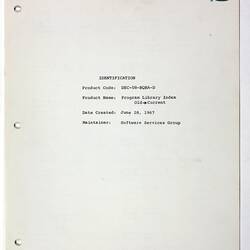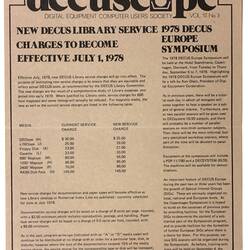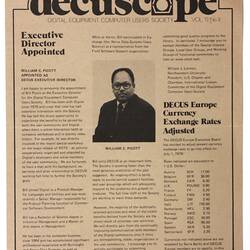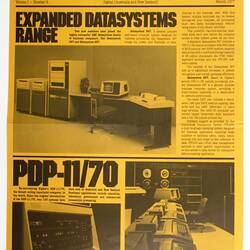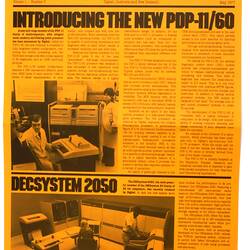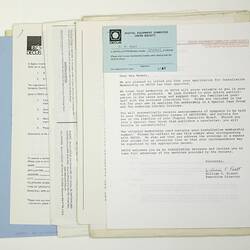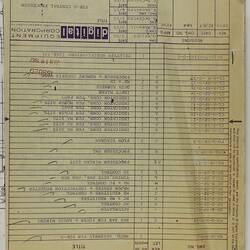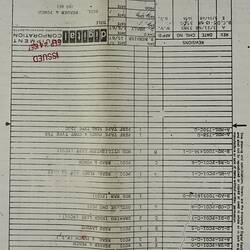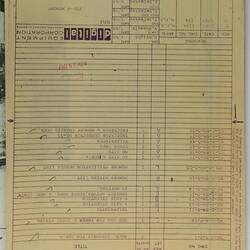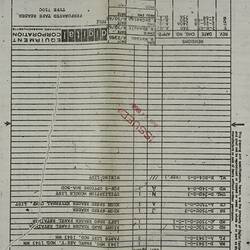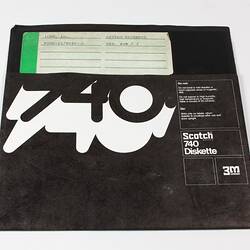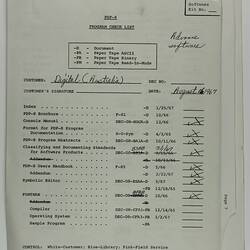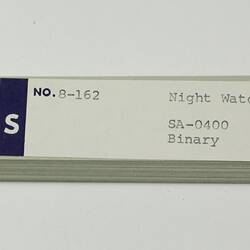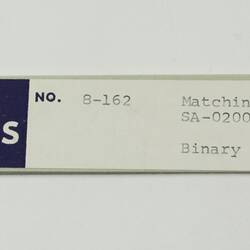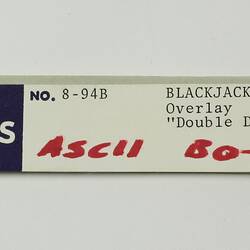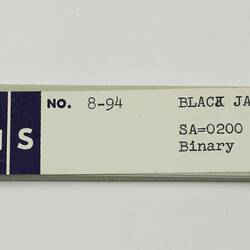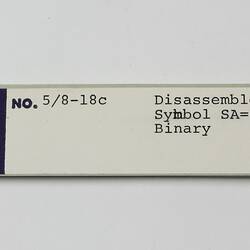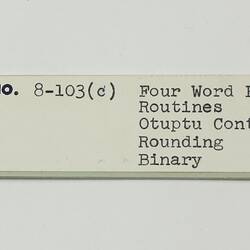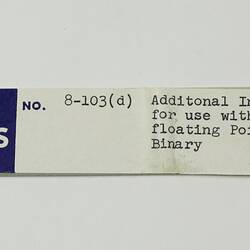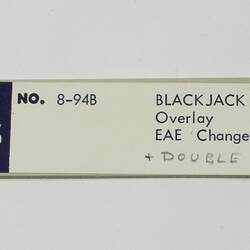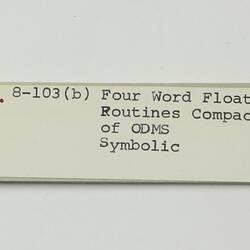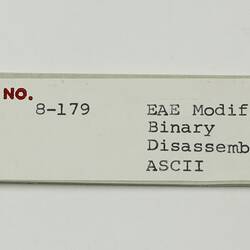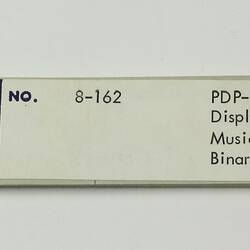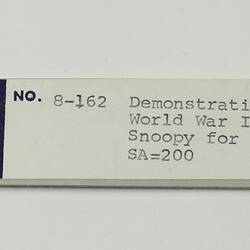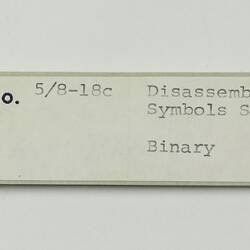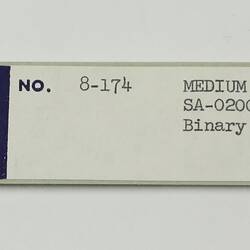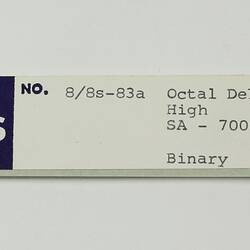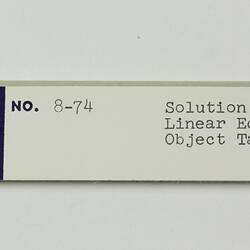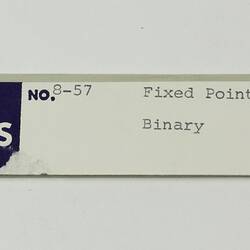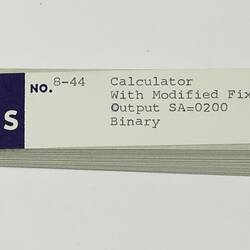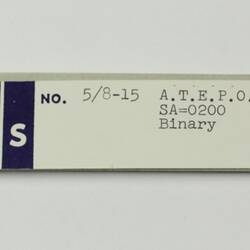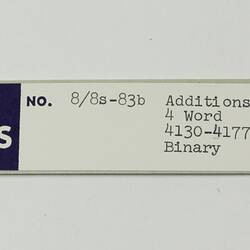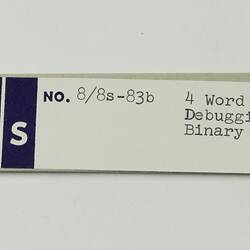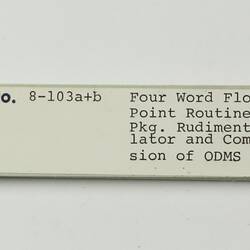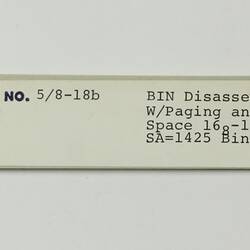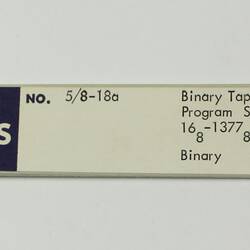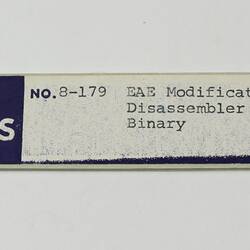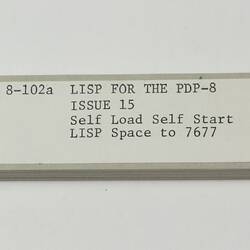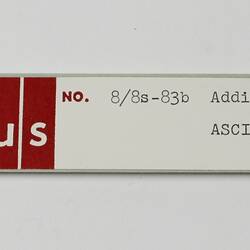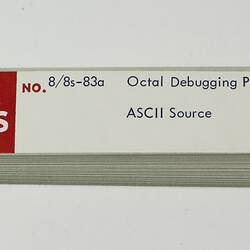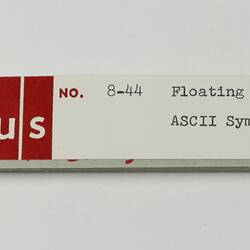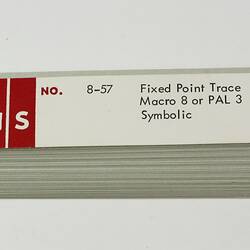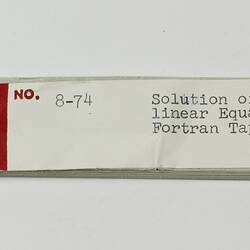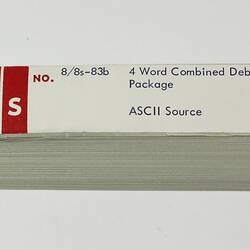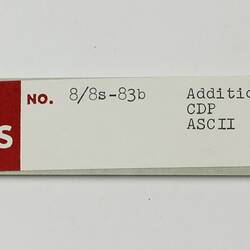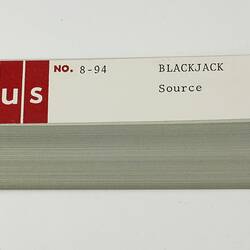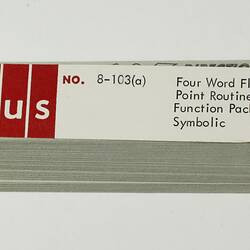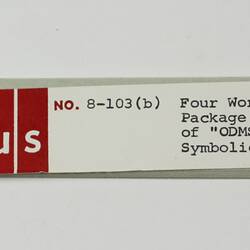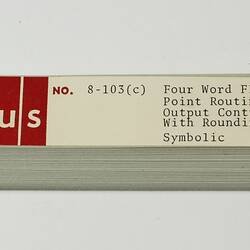Summary
DEC PDP-8 data processor minicomputer. Made by Digital Equipment Corporation (DEC) in the United States of America in about 1968. It was one of the first sold in Australia.
The machine was used by the CSIRO Division of Tribophysics (later Material Science) for examining crystal structure and phenomena associated with friction. The computer was also used by other organisations such as Monash University.
The machine used discrete transistor circuitry.
The PDP-8 computer was introduced in 1966. The PDP-10 succeeded it in 1970. The PDP-8 was designed by Gordon Bell - cf biography of Bell in "Portraits in Silicon" by Robert Slater, MIT, 1987.
Physical Description
Computer consists of a rectangular box with a transparent sided box with light blue top (with ventilation slots)and lower blue edging. Circuitry can be seen through the transparent sides. The lower box has blank brown sides with a mainly black control and monitoring panel in front and a mainly black back with counter, switches, meter, sockets and lights. Front lower panel switches comprise 3 data field, 3 inst field, 9 switch registers and 8 control switches (all paddle type). There are 82 control light indicators. Voltage meter (0 to 30 volts d.c.) On rear panel, plastic slip cover for unit. The computer is accompanied by sixty one paper tape programs that were used in the computer. There is also a large collection of documentation including: Program & Routine Listing Program Libraries (DEC & DECUS) User and programming manuals Handwritten Maintenance Log 1968 - 1983 Promotional and Advertising material DEC catalogues, price and supplies lists DECUS documentation eg membership information Component and other Drawings DEC & DECUS newsletters, magazines and journals (DEC = Digital Equipment Corporation DECUS = Digital Equipment Corporation User Society)
Significance
The PDP-8 was the first successful commercial minicomputer. The Digital Equipment Corporation (DEC) introduced it in1965. More than 50,000 systems were sold, a record at that time.
More Information
-
Collecting Areas
-
Acquisition Information
Donation from Materials Science Division, Commonwealth Scientific & Industrial Research Organisation (CSIRO), 19 Jun 1986
-
Manufacturer
Digital Equipment Corporation (DEC), United States of America, circa 1968
-
Designer
-
Agent
Mr. Max McKay Burnet - Burnet Antique Computer Knowhow Pty Ltd, Sydney, New South Wales, Australia, circa 1968
Max started DEC's Melbourne and Perth offices and was Australian Managing Director from 1975 to 1982. From 1971 to 1994, Max managed DEC's liaison with DEC's User Society (DECUS) - it had 4000 members. -
User
Professor Alan Head - CSIRO, Melbourne, Victoria, Australia, 1968 - 1979
-
Inscriptions
Front - lower part: DIGITAL EQUIPMENT CORPORATION / DATA PROCESSOR / PDP 8 Back - lower part: Paper label: C.S.I.R.O. / TP3820 Counter: 120 V 50 CY / (counter read-out) 100649 / TOTAL HOURS
-
Model Name or Number
-
Brand Names
-
Classification
-
Category
-
Discipline
-
Type of item
-
Overall Dimensions
600 mm (Length), 500 mm (Width), 880 mm (Height)
-
Exhibition Collection Management
545 mm (Length), 555 mm (Width), 855 mm (Height)
-
Dimensions
550 mm (Length), 546 mm (Width), 845 mm (Height)
Measurement From Conservation.
-
References
Biography of Bell in "Portraits in Silicon" by Robert Slater, MIT, 1987. PDP_8 [Link 1] accessed 23 December 2011
-
Keywords
